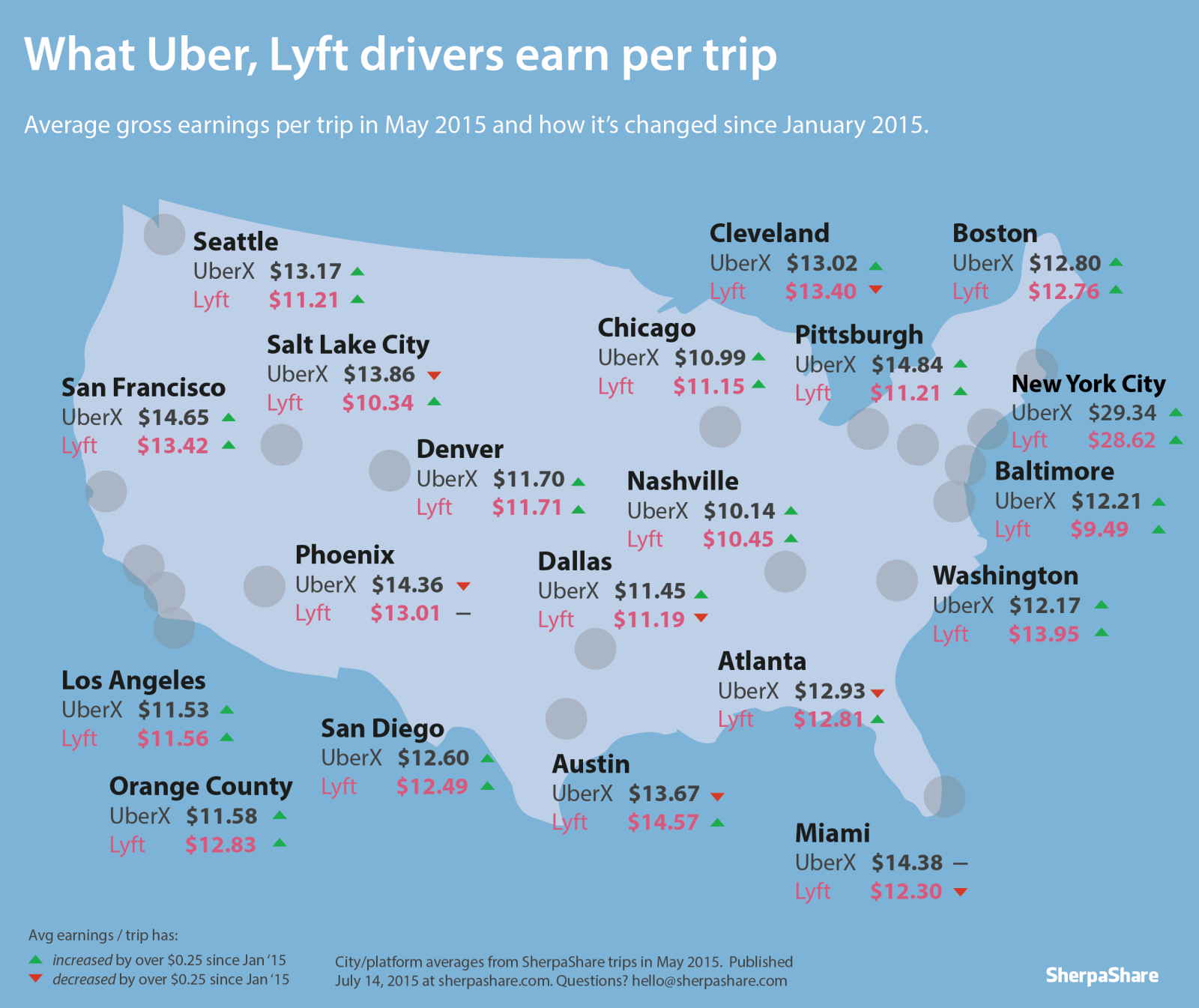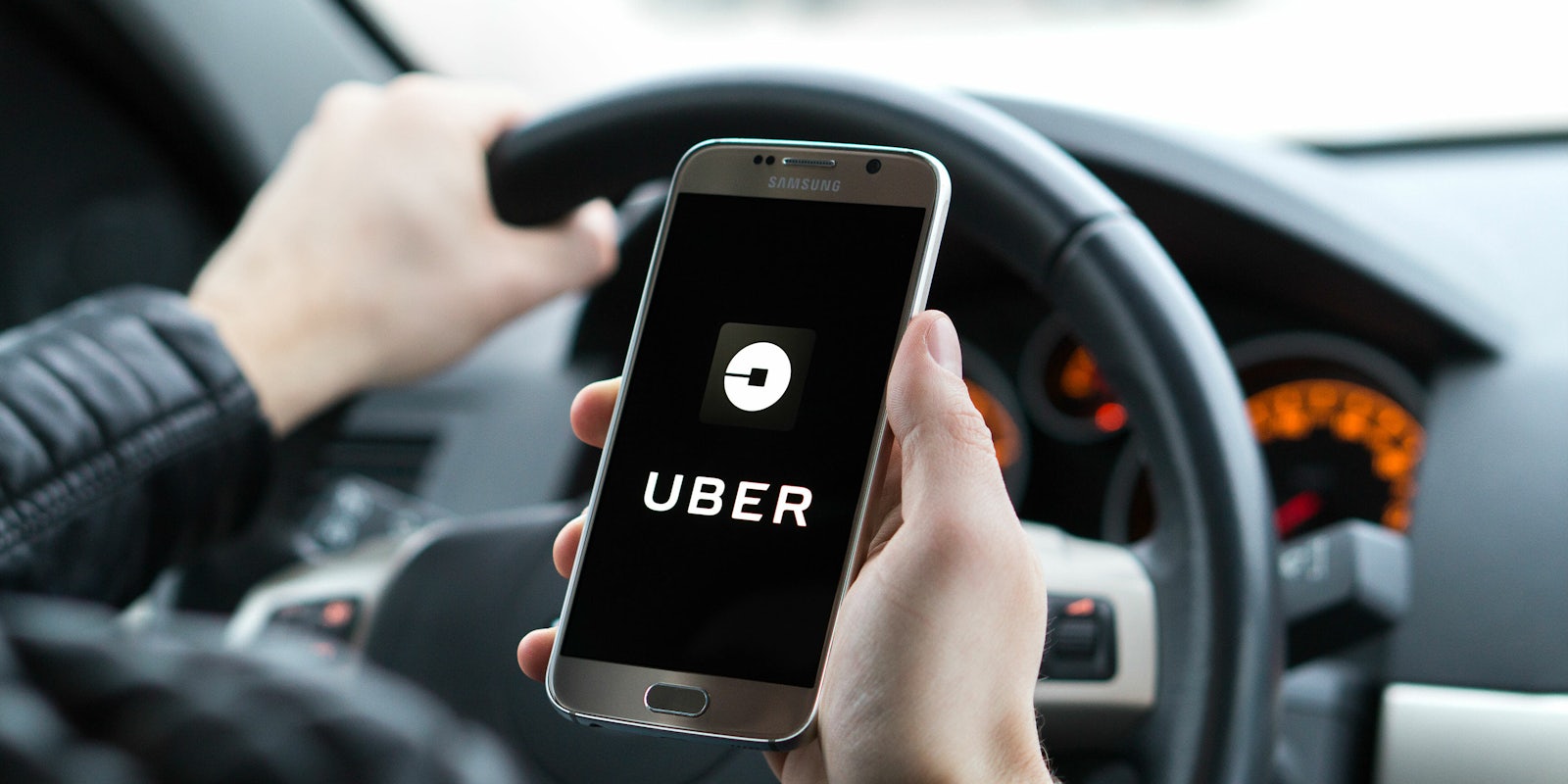An MIT study published last week has sparked a feud between the renowned university and Uber, the world’s largest ride-hailing company.
The study, first reported by Recode, claims the average Uber driver gets paid less than $4 an hour. Using data from a survey of 1,100 ride-hailing drivers, MIT also found 74 percent of drivers don’t get paid minimum wage and 30 percent are losing money when you add in operating expenses.
Uber responded swiftly to the damning study by bringing in economist Jonathan Hall to explain its alleged flaws. He claims the questions MIT asked survey participants were misleading and produced results that were up to 58 percent lower than actual wages.
“Perhaps most surprisingly, the earnings figures suggested in the paper are less than half the hourly earnings numbers reported in the very survey the paper derives its data from,” Hall wrote in his blog post.
With the misguided confidence of beleaguered Uber founder Travis Kalanick, current head Dara Khosrowshahi slammed MIT in a tweet, calling one of the most respected institutions “Mathematically Incompetent Theories.” The lame pun wasn’t well received, with Inc. writer Justin Bariso saying it “destroyed months of hard work” of Uber trying to fix its image.
MIT = Mathematically Incompetent Theories (at least as it pertains to ride-sharing). @techreview report differs markedly from other academic studies and @TheRideshareGuy recent survey. Our analysis: https://t.co/S2aAqCuDR0
— dara khosrowshahi (@dkhos) March 3, 2018
Ignoring the insult, the MIT research group said it would revisit the study.
“I can see how the question on revenue might have been interpreted differently by respondents,” the study’s lead author Stephen Zoepf told Reuters. “I’m re-running the analysis this weekend using Uber’s more optimistic assumptions and should have new results and a public response acknowledging the discrepancy by Monday.”
So, how much do Uber and Lyft drivers actually make? Past studies suggest significantly more than what is quoted in MIT’s study, though for many of these independent contractors, it’s not enough to make a living.
The most recent study, conducted by the University of Chicago, Stanford University, and Uber’s economic team, claimed male drivers earned $21.28 per hour, while female drivers earned 7 percent less. While the study looked at the earnings of 1.8 million drivers, it did not consider expenses.
A survey of 1,150 ride-hailing drivers conducted by The Rideshare Guy found Uber drivers make an average of $15.68 per hour, or around $32,500 per year in a 40-hour work week. However, that is also before expenses—which include gasoline, vehicle depreciation, and insurance.
In his rebuttal, Hall said drivers make $16.53 or $13.04 per hour after expenses once MIT’s numbers were adjusted to account for methodology errors. That would mean drivers make slightly more than the minimum wage in states where it’s the highest, like in New York or Washington.
In 2016, BuzzFeed News used internal calculations provided by Uber to determine that drivers in Denver, Detroit, and Houston earn less than an average of $13.25 an hour after expenses. In Detroit, drivers earned just $8.77 an hour. That’s substantially less than what is required to live comfortably in these three cities.

Those results echo a 2015 graphic published by SherpaShare that shows drivers in every U.S. city except New York receive less than $15 an hour, far from the $75,000 to $90,000 Uber brazenly claimed its drivers earned back in 2014.
Lyft drivers seem to make significantly more than Uber drivers. In the same driver wage study, The Rideshare Guy said Lyft drivers make $17.50, about $2 more on average than those who use the rival service.
For Uber, the latest wage reports suggest drivers are getting paid less than they did just a few years ago. Statistics offered by Uber in 2015 claim drivers in its top 20 markets earned, on average, more than $19 an hour excluding expenses—around $4 less than they earn today. The decline could be caused by lower rates and Uber’s wavering reputation among users.
It’s important to note that with the recently overhauled Uber policies, drivers can receive tips on both ride-hailing services. This could help offset slow periods and help bring Uber drivers closer to minimum wage. Of course, many drivers use Uber and Lyft as a secondary source of income, working flexible part-time hours rather than a rigid 40-hour work week.
As the discrepancies in the studies show, it’s not clear exactly how much Uber drivers make after expenses. What is clear is that MIT’s latest study, as it stands, is an outlier when compared to past surveys. If it’s revised and the numbers more closely match past findings, we should have a good idea of how much the average Uber driver makes in an hour.
Update 7:54am, March 7: As anticipated, Zoepf published a response to Uber’s comments on Monday. He said Hall’s “thoughtful” critique is valid and admits the survey questions “should have been worded more clearly.”
“In re-reading the wording of the two questions, I can see how respondents could have interpreted the two questions in the manner Hall describes,” Zoepf wrote. “I will be conducting a thorough revision of the paper and will need to update it at CEEPR.
Here is my statement regarding the recent CEEPR working paper “The Economics of Ride Hailing.” pic.twitter.com/lHJkaB0frX
— Stephen Zoepf (@StephenZoepf) March 5, 2018
While official findings will be published in a few weeks, Zoepf included an initial reevaluation that found driver profits to be higher than what was first reported. Zoepf used two methods to come up with the new figures. In the first, Hall’s recommended method, drivers receive a profit of $8.55. That’s up from $3.37, but 54 percent of drivers would still fall below minimum wage. The second method raises driver income to $10 an hour, where 41 percent of workers would make under minimum wage.
After outlining the new findings, Zoepf urged Uber and Lyft to be transparent about how much drivers make after expenses.
While the new numbers bare well for the two ride-hailing giants, Lyft told the Daily Dot that it still believes they are inaccurate. Here is the company’s official statement offered by Adrian Durbin, Lyft’s director of communications:
When an academic study changes so dramatically in just a matter of days, that’s a real flag. While the revised results are not as inaccurate as the original findings, driver earnings are still understated. MIT’s study has fundamental methodology problems.
Drivers are integral to everything we do, and have been since Day 1. That is why we were first to implement in-app tipping, same-day payments, and access to affordable vehicles. We will continue to focus on drivers and implement product improvements to help them succeed and grow their earnings.


